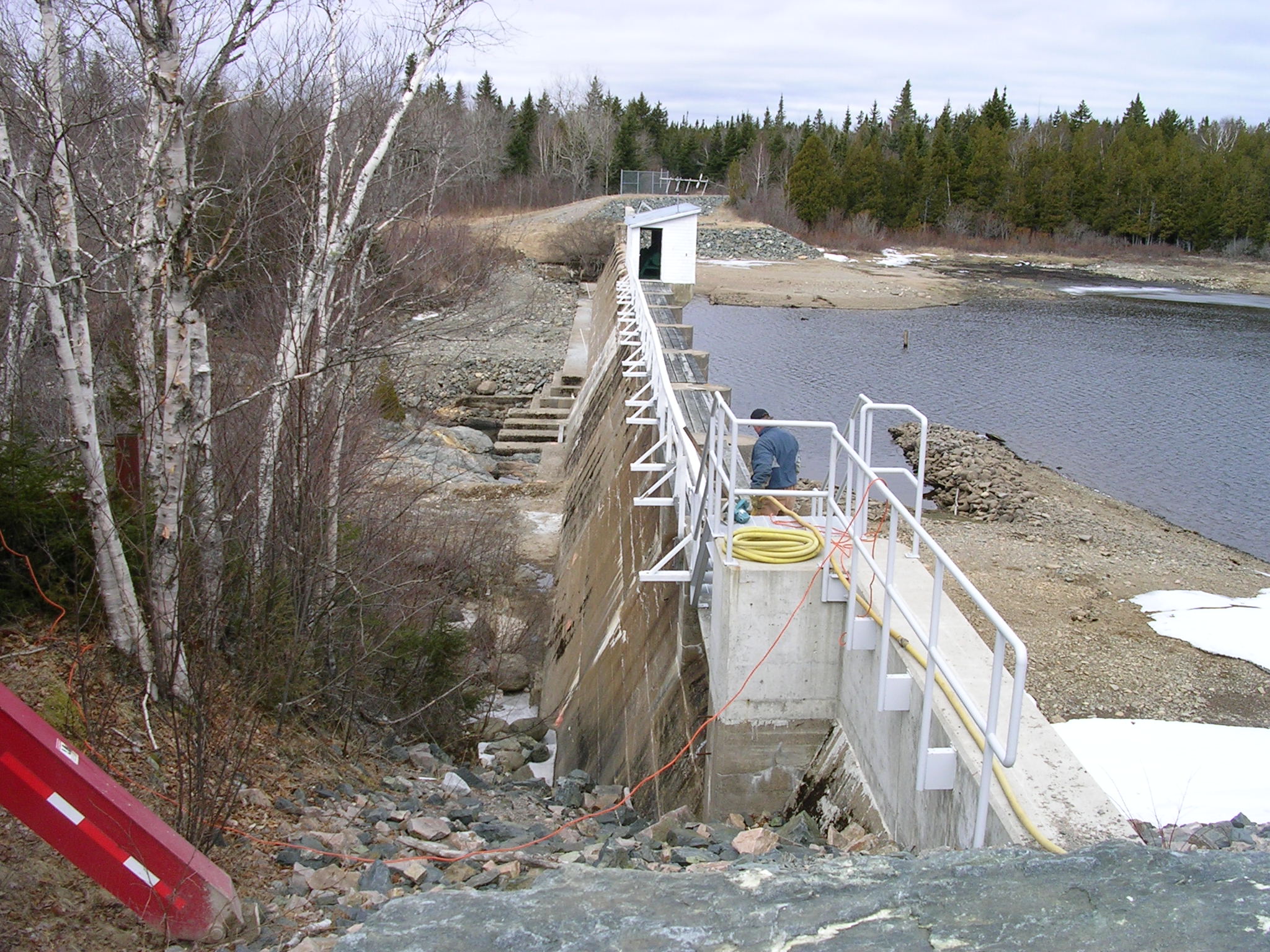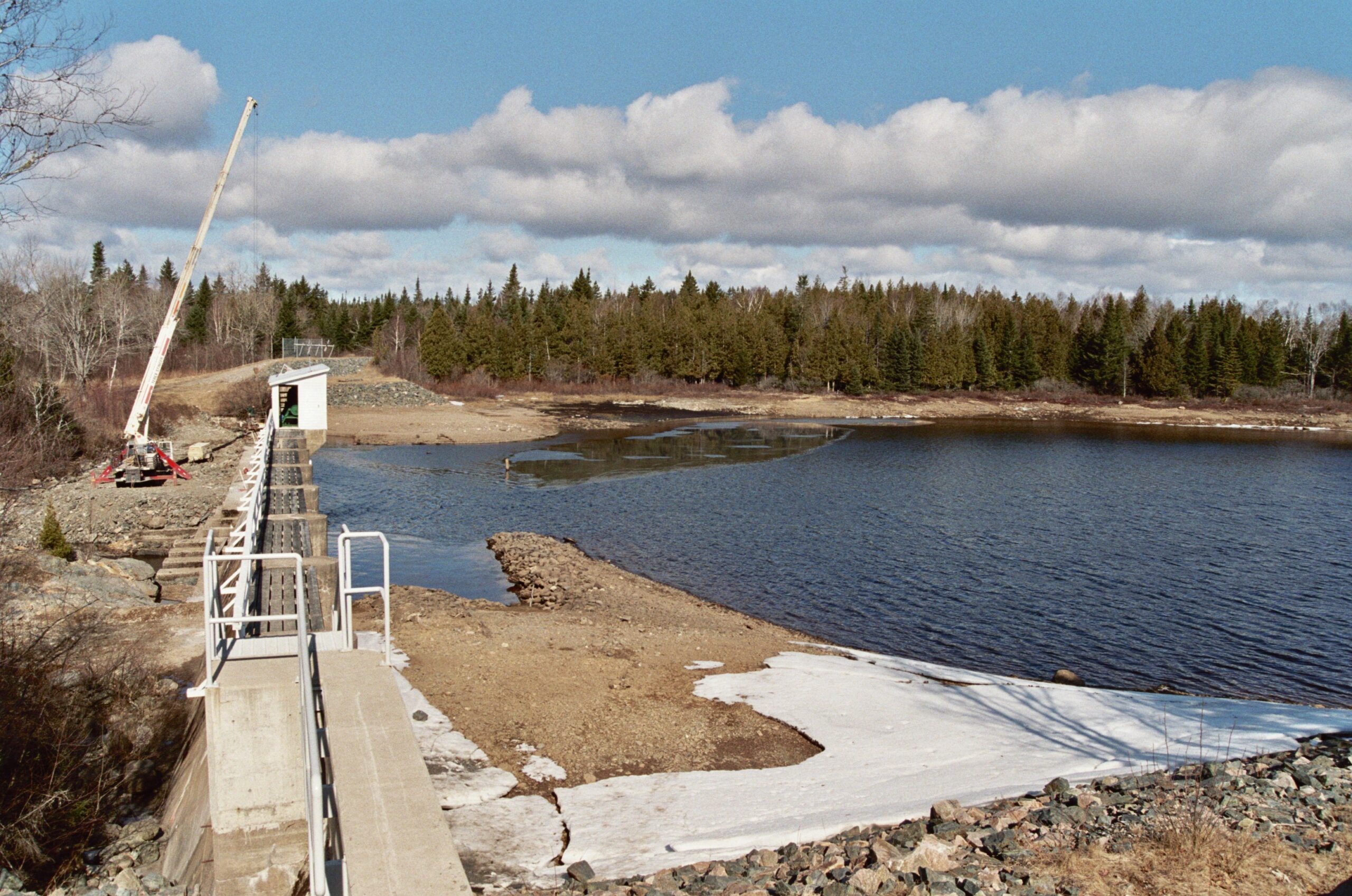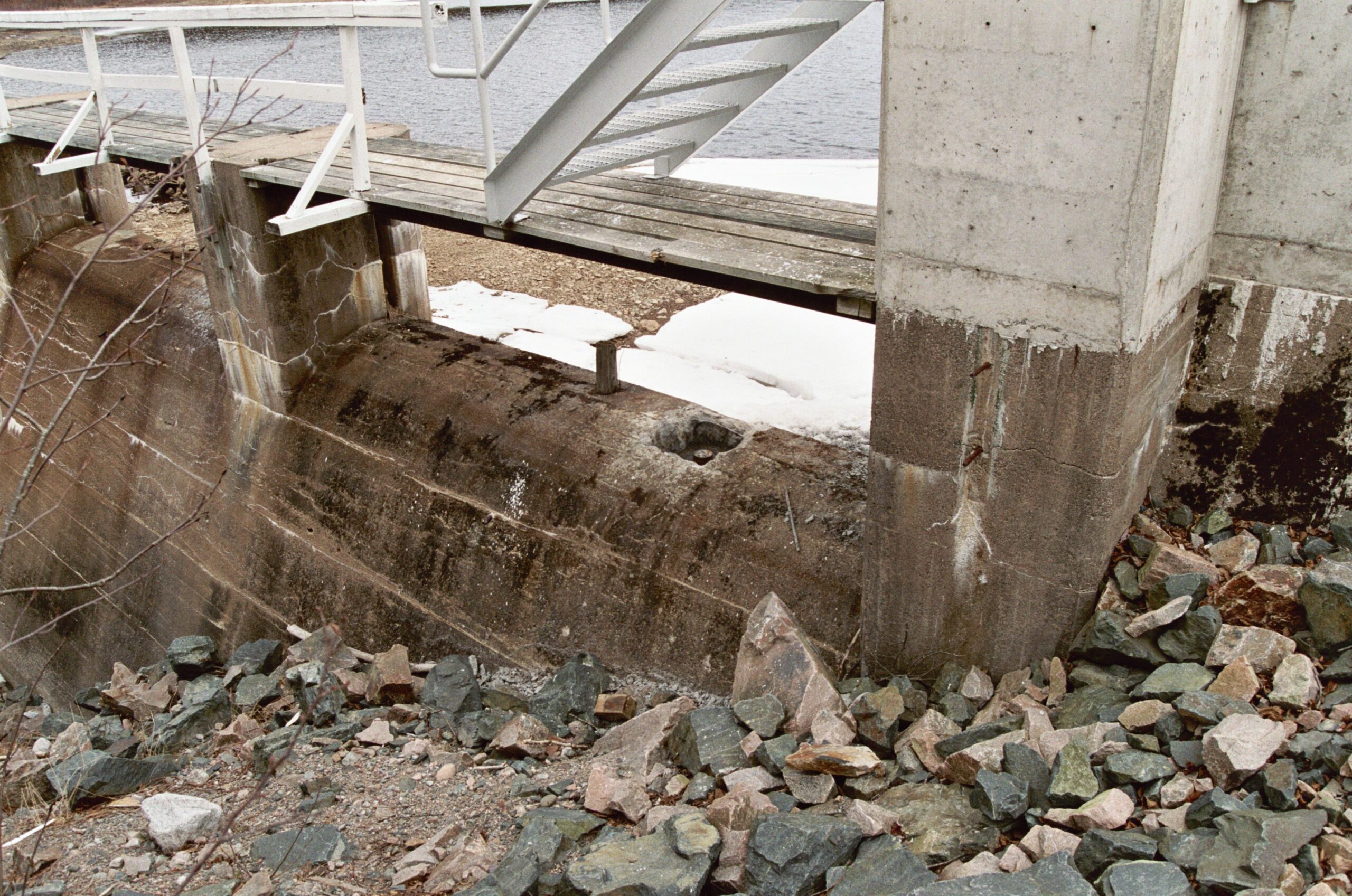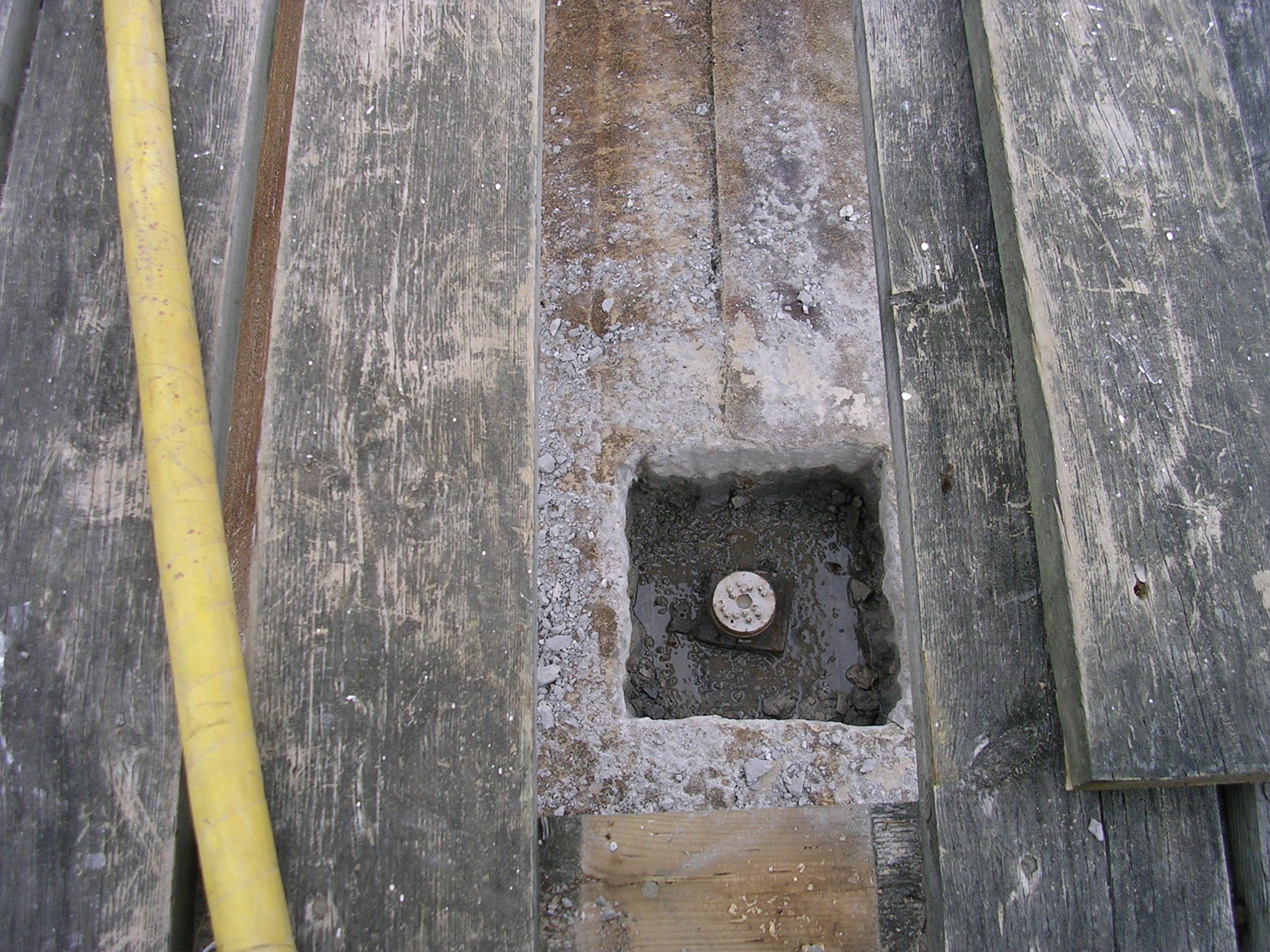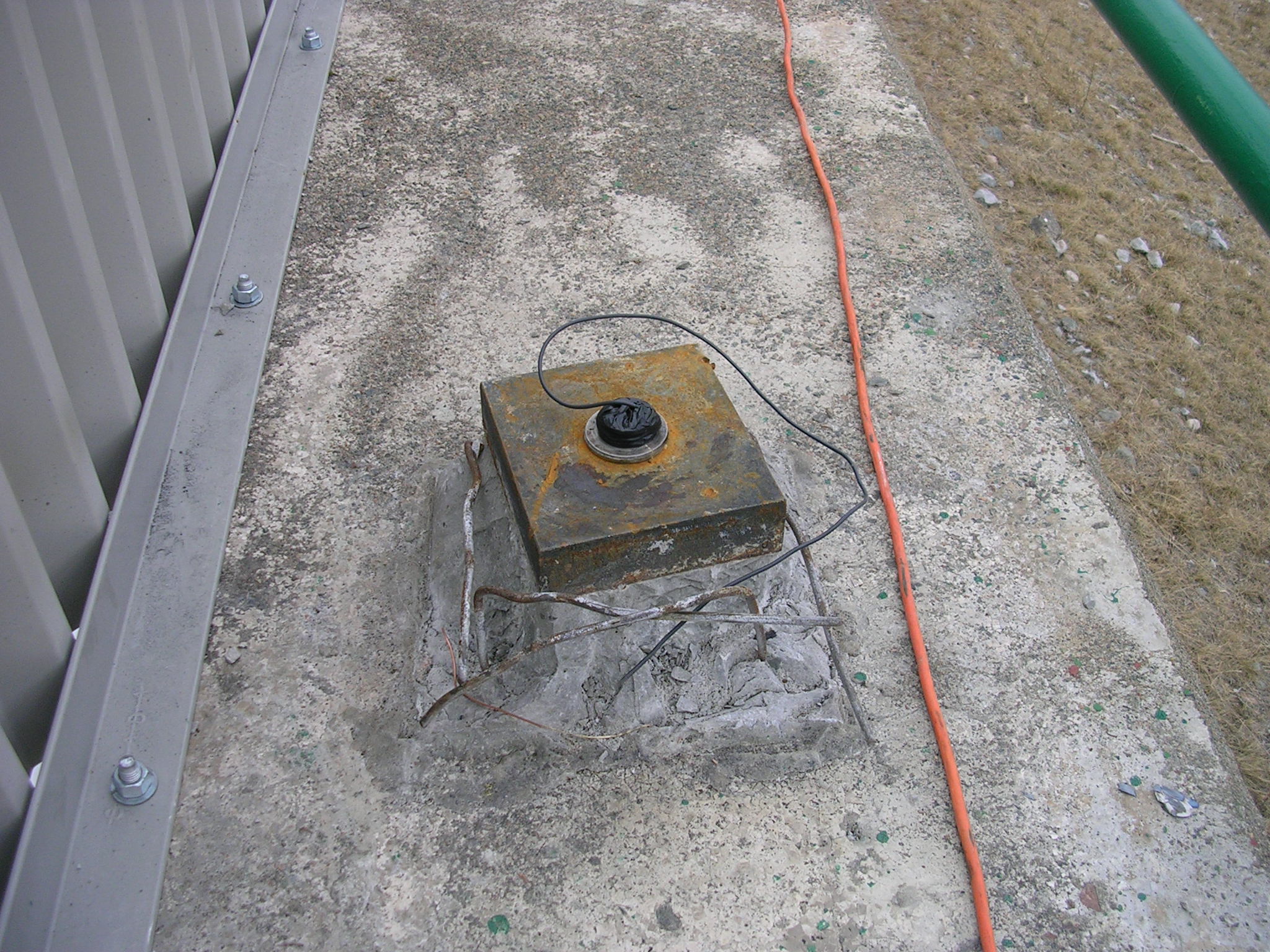Condition Assessment
Loch Alva and Log Falls Dams
During the period from 1964 to 1974, these dams were retrofitted with tie-down anchorages consisting of BBR button head anchorage assemblies, and Stressteel prestressing steel rods, that were grouted into bedrock. Since anchors were between 32 and 42 years old, at the time of the evaluation (2006), SGE needed information relative to the existing condition of the anchors and the potential for corrosion. To meet this need SGE retained McMahon & Mann/ERTesting to perform nondestructive testing (NDT) and condition assessment of 13 selected anchors.

